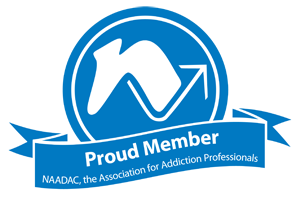The Nature of the Problem
Opioid abuse is a serious issue having a devastating effect on many communities in this country as well as globally. The United States is the leader in opioid overdoses with close to 17,000 deaths per year (Vakharia, 2014). Another report suggests an even more disturbing number of 44 deaths per day (Chang et al., 2016). Opioid overdose leads to “slowly depressing respiration” typically lasting several hours (Davis, Webb and Burris, 2013). The magnitude of opioid use and misuse has had such a widespread health and socio-economic impact that it has reached epidemic levels impacting millions of individuals.
The primary cause of this opioid epidemic is the prescribing of strong, pain reducing medications such as hydrocodone, oxycodone and methadone (Davis et al., 2013). Some of the brand name medications include OxyContin, Percocet, Vicodin, Tylox, and Demerol (Melvin, 2015). Often, patients who genuinely need the medication become addicted after being treated with them. Data suggests that prescription medications kill more Americans than heroin and cocaine combined (Davis et al., 2013). The same authors also report that the typical opioid victim is a white, non-Hispanic male between the ages of 45 to 54 (Davis et al., 2013).
The Tampa Bay Region
Just as the entire country is struggling with this epidemic, so too is Tampa Bay. While some may argue that the opioid epidemic is not as widespread as it used to be; there are a few facts that should be examined when considering this dilemma. Indeed, Tampa Bay as well as the entire state of Florida experienced a surge of “pill mills” between the years 2003 and 2010 (Kennedy-Hendricks et al., 2016). The phrase “pill mill” is used to define and include doctors, pain clinics and other providers who are responsible for large quantities of prescription drugs paid for with cash and which serve no legitimate medical purpose (Kennedy-Hendricks et al., 2016). Between the years of 2003- 2010, the state of Florida provided limited to zero oversight over such facilities. Research shows that out of 856 pain facilities in the state of Florida, Hillsborough County was home to 107 of them (Melvin, 2015). Moreover, out of the 100 providers who were prescribing the largest amounts of Oxycodone in the country, 90 were located in the state of Florida (Kennedy-Hendricks et al., 2016). Because Florida was one of the leading states with providers over-prescribing strong pain medication; the state implemented prescription drug monitoring programs (PDMP) and pill mill laws to reduce the misuse and deaths caused by opioid analgesics (Chang et al., 2016).
The effects of this problem are devastating. On one hand, there are the doctors who have chosen to become drug pushers and disregard the Hippocratic Oath they have sworn. Such providers have been stripped of their licenses and charged with drug trafficking and racketeering. Tampa Bay in particular has been home to some of the most distressing cases with providers who have sold thousands upon thousands of prescriptions opioids to addicts and drug dealers for enormous amounts of money. For instance, Dr. Jacinda Gillis made $1.3 million annually running two clinics in the region and charging the discontinued rate of $125 in cash for prescription pills (Morel, 2015). An undercover cop who “used” her services was prescribed 150 Oxycodone pills and 20 Diazepam pills on his very first visit (Morel, 2015).
Another example are the owners of a large pill mill clinic located on N Dale Mabry Hwy in Tampa, Florida who were sentenced to 30 years in prison for selling Xanax and Oxycodone to individuals traveling in groups from Kentucky and Ohio (Phillips, 2014). The owners were also providing coaching services to their “patients” as to what they should be saying in order to receive the medications they wanted (Phillips, 2014).
The effects of the opioid epidemic are also clearly distinguishable when it comes to the victims of opioid use. Because local and state agencies have significantly reduced the presence of pill mills, many victims set out in search of other opioid sources in order to cope with their addiction. Heroine has become one such alternative. According to the Hillsborough County Sheriff’s Captain Frank Losat; the area has seen a surge in the number of heroin users (Sullivan, 2015). To add to that, heroin overdoses have been linked to Fentanyl which is an extremely potent and deadly alternative to most commonly used opioids. Fentanyl goes by the name “super pill”, prompting Pinellas County Sheriff Bob Gualtieri, to call its use “a public health emergency” (Michael, 2016).
Another difficulty resulting from this epidemic is the exploding number of addicts seeking help, over-burdening the system and causing a shortage of available treatment options. Drug rehab centers in the region are unable to meet the demand of needed beds required to treat all patients (Hollenbeck, 2016). This is in fact a problem caused by the opioid addiction epidemic whose consequences are slowly emerging and are creating this gap in services.

Macro Interventions
16,000 to 17,000 deaths per year is truly a disturbing number, especially when these deaths could be prevented entirely (Davis et al, 2013). As previously noted, the prescription drug monitoring programs (PDMP) was one macro intervention that the state of Florida decided to enact in order to reduce the opioid epidemic. The PDMP uses an electronic database to collect patients’ information and provides pharmacists, doctors and other providers’ access to patients’ medical history (Chang et al., 2016) (Rutkow et al., 2015). Additionally, the PDMP makes it possible for providers to confirm patients’ identity and able to identify any potential high risk patients susceptible to opioid addiction (Chang et al., 2016). After only 3 months from implementation the PDMP showed promising results, namely 80,000 providers have become registered with 340,000 queries (Rutkow et al., 2015).
Currently, there are 48 state that have operating PDMPs, however there is limited evaluation procedures which presents a concern (Delcher, Wagenaar, Goldberger, Cook, and Maldonado-Molina, 2015). For instance, a study performed in June of 2014 compared states with functioning PMDPs to those without, and found no difference in the opioid mortality rates (Delcher et al., 2015).
Recent findings suggest that after the implementation of the program in the state of Florida, oxycodone mortality rates have decreased by 25% (Rutkow et al., 2015). The more important question however, is exactly how that has been achieved? One of the proposed hypothesis states that once health care providers have access to the program they change their prescribing habits (Delcher et al., 2015). Although the implementation of the PDMP has shown improvement in mortality rates and opioid abuse, the decreases are also mostly observed with providers having a previously high rate of prescribing opioids (Chang et al., 2016; Rutkow et al., 2015).
Pill mill laws enforced in Tampa are also utilized in the state of Florida. They serve as another example of macro intervention implemented to regulate and reduce the amount of unauthorized clinics prescribing opioids. In essence, the Comprehensive anti-pill mill bill’s (HB 7095) purpose was to enforce stronger criminal as well as administrative consequences for doctors and clinics participating in drug trafficking activities (Myfloridalegal, 2011). Additionally, the bill requires providers to register with the Department of Health, toughens the oversight of pharmacies and provides specific guidelines as to how fast data needs to be entered (Myfloridalegal, 2011).
However, as with any bill implementing a macro intervention, there are pros and cons. Although the law enforces and regulates the disbursement of pain medications, critics of the bill state that patients who have chronic pain have been unfairly impacted. According to the Chairman of the Senate Health Policy Committee, Aaron Bean the anti-pill mill law has sent “the pendulum from one direction to the other” (Ray, 2015). Clearly, issues as this need to be carefully reviewed with a specific and non-partisan approach. A balance must be struck between effectively monitoring the over-prescribing of pain medications and providing the much needed comfort to those patients who legitimately need such medications.

Liked this post and want to stay connected? You can subscribe to freedom Counseling’s mailing list, “Like” and Follow us on Facebook and Instagram!
Become Who You Are.
References:
Chang, H., Lyapustina, T., Rutkow, L., Daubresse, M., Richey, M., Faul, M., & … Alexander, G. C. (2016). Impact of prescription drug monitoring programs and pill mill laws on high-risk opioid prescribers: A comparative interrupted time series analysis. Drug And Alcohol Dependence, 1651-8. doi:10.1016/j.drugalcdep.2016.04.033
Davis, C., Webb, D., & Burris, S. (2013). Changing Law from Barrier to Facilitator of Opioid Overdose Prevention. Journal Of Law, Medicine & Ethics, 4133-36.
Delcher, C., Wagenaar, A. C., Goldberger, B. A., Cook, R. L., & Maldonado-Molina, M. M. (2015). Abrupt decline in oxycodone-caused mortality after implementation of Florida’s Prescription Drug Monitoring Program. Drug And Alcohol Dependence, 15063-68. doi:10.1016/j.drugalcdep.2015.02.010
Hollenbeck, S. (July 6, 2016). Bay Area drug rehab experts say something must be done to help with treatments. . Retrieved July 17, 2016 from http://www.wtsp.com/news/local/bay-area-drug-rehab-experts-say-something-must-be-done-to-help-with-treatment/265189531
Kennedy-Hendricks, A., Richey, M., McGinty, E. E., Stuart, E. A., Barry, C. L., & Webster, D. W. (2016). Opioid Overdose Deaths and Florida’s Crackdown on Pill Mills. American Journal Of Public Health, 106(2), 291-297. doi:10.2105/AJPH.2015.302953
Melvin, T. (2015, March 28). Impacts of Opioids and the Tampa Community. Retrieved from https://prezi.com/ssocf7zlstqh/impact-of-opiads-and-the-tampa-bay-community/
Michael, M. (2016, Match 21). Sheriff: ‘Super pill’ is deadly and cheap, becoming big problem. Retrieved from http://wfla.com/2016/03/21/sheriff-super-pill-is-deadly-and-cheap-becoming-big-problem/
Morel. L. (2015, October 21). In worst pill mill case in Pinellas history, accused doctor serving as own counsel. Retrieved from http://www.tampabay.com/news/courts/criminal/in-worst-pill-mill-case-in-pinellas-history-accused-doctor-serving-as-own/2250696
Myfloridalegal (2011, June 3). Retrieved from http://www.myfloridalegal.com/newsrel.nsf/newsreleases/9AD68A6580FA8DFD852578A400499E5E
Phillips, A. (2014, September 19). Tampa pill mill owners, manager sentenced to 30 years, get huge fines. Retrieved from http://www.tampabay.com/news/courts/criminal/pain-clinic-owners-sentenced-to-30-years-in-prison/2198509
Ray, R. (2015, October 30). Senators say anti-pill mill law has sent patients’ pain go untreated. Retrieved from http://floridapolitics.com/archives/192845-senators-say-anti-pill-mill-law-has-seen-patients-pain-go-untreated
Rutkow, L., Hsien-Yen, C., Daubresse, M., Webster, D. W., Stuart, E. A., Alexander, G. C., & Chang, H. (2015). Effect of Florida’s Prescription Drug Monitoring Program and Pill Mill Laws on Opioid Prescribing and Use. JAMA Internal Medicine, 175(10), 1642-1649 8p. doi:10.1001/jamainternmed.2015.3931
Sullivan, D. (2015, September 27). Heroin deaths rise in Tampa Bay, but surge in Hillsborough. Retrieved from http://www.tampabay.com/news/publicsafety/heroin-deaths-rise-in-tampa-bay-but-surge-in-hillsborough/2247334
Vakharia, S. P. (2014). Incorporating Substance Use Content Into Social Work Curricula: Opioid Overdose as a Micro, Mezzo, and Macro Problem. Social Work Education, 33(5), 692-698.






Trackbacks & Pingbacks
[…] United States. As a matter of fact, I have also written about its effects in my local community (Opioid Abuse in Tampa Bay) and the lack of sufficient beds to accommodate the ever growing list of individuals succumbed to […]
Leave a Reply
Want to join the discussion?Feel free to contribute!